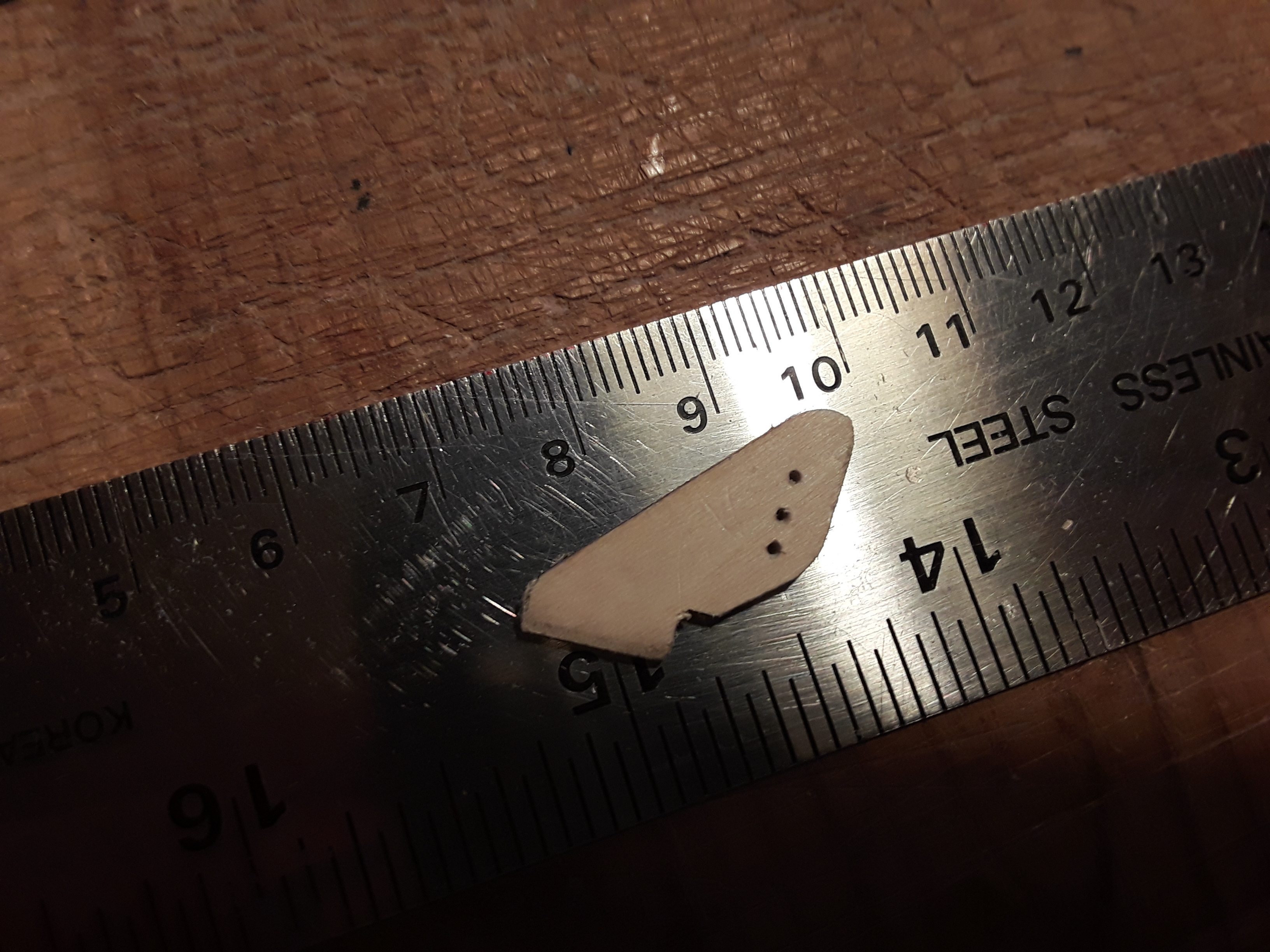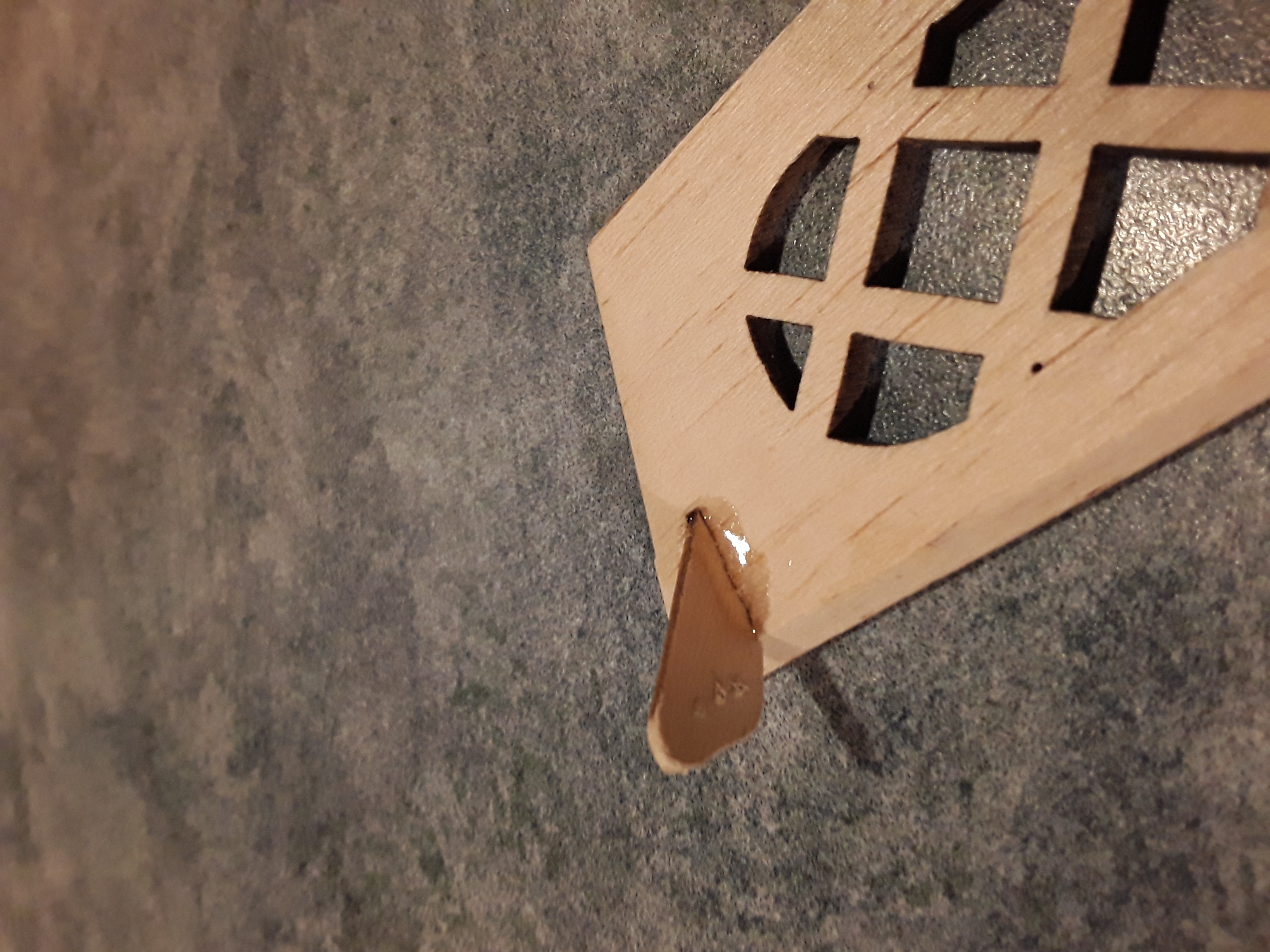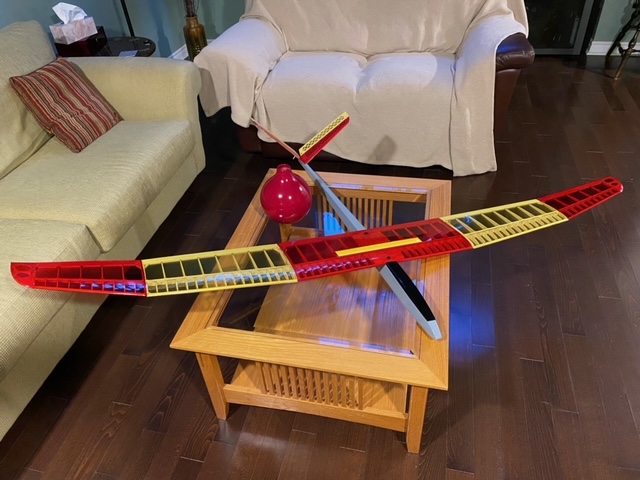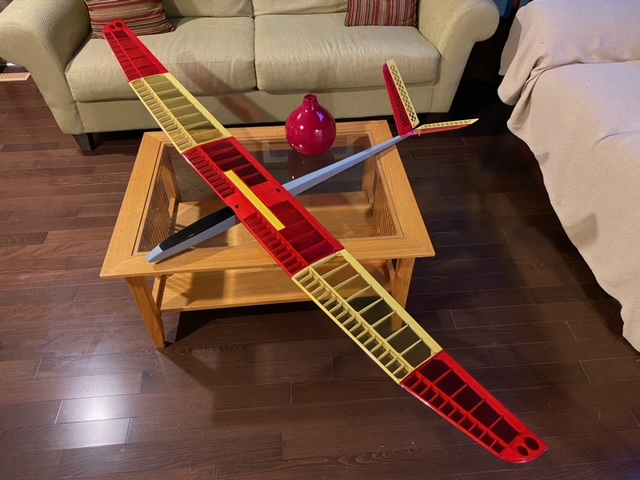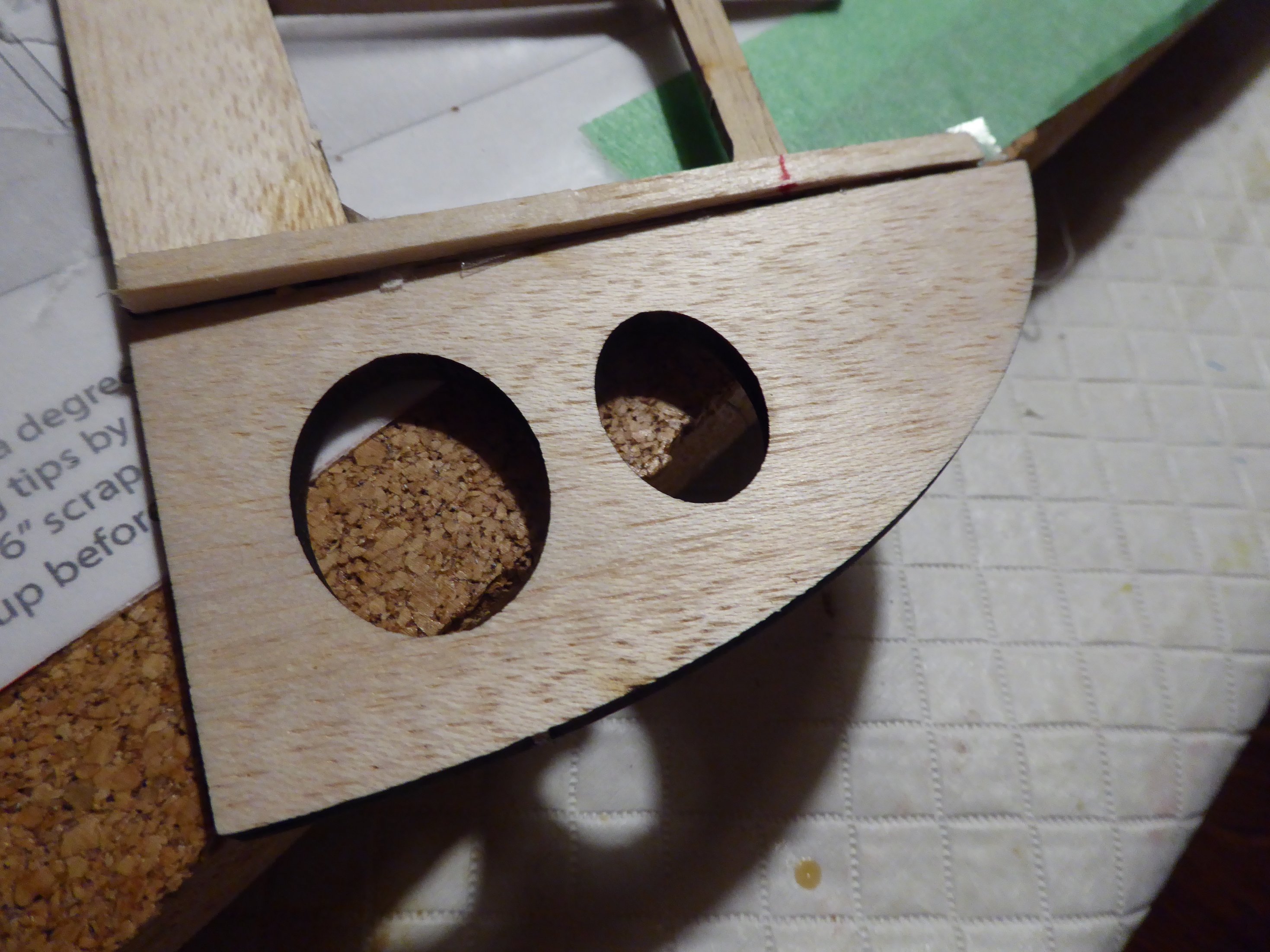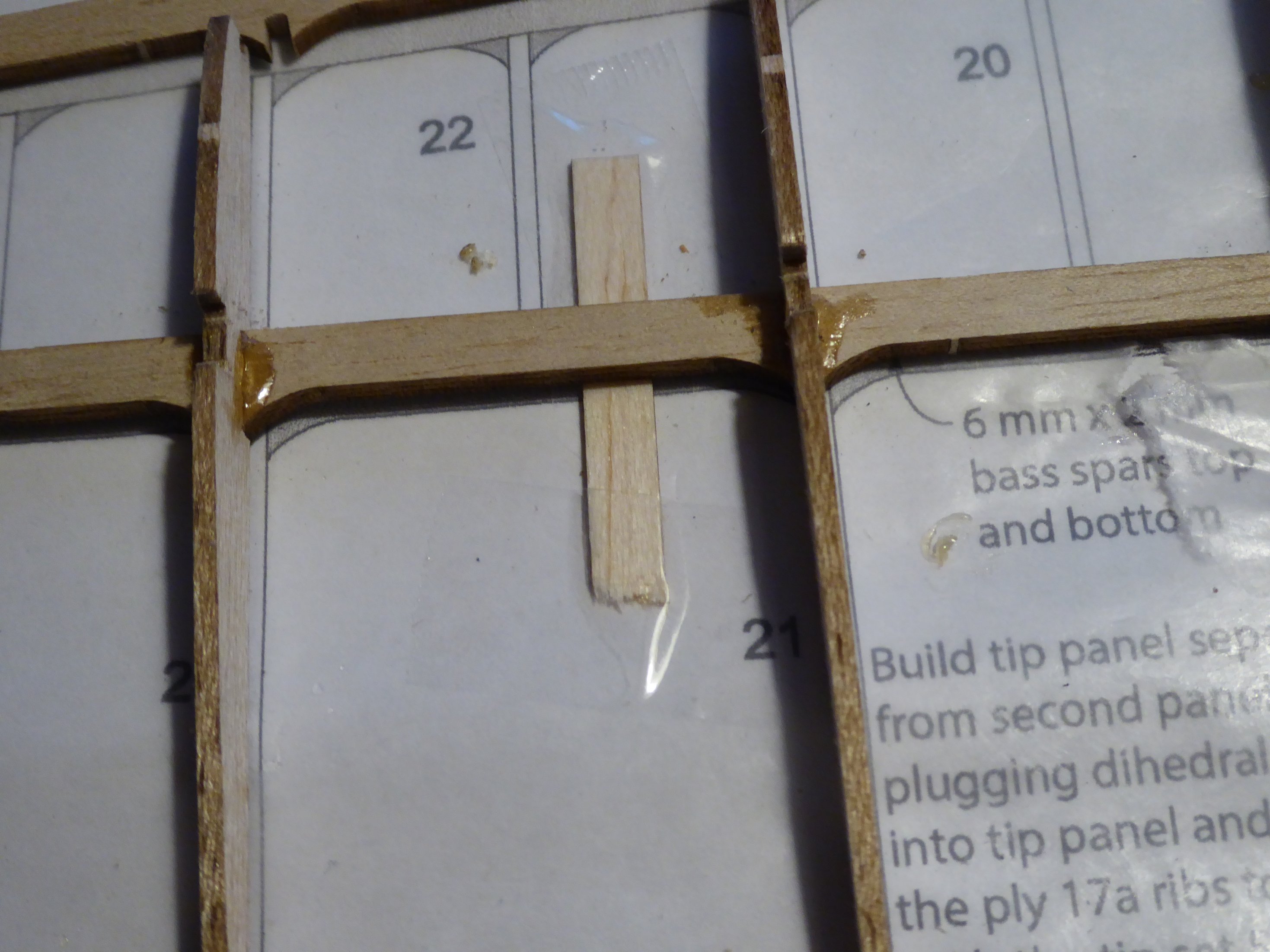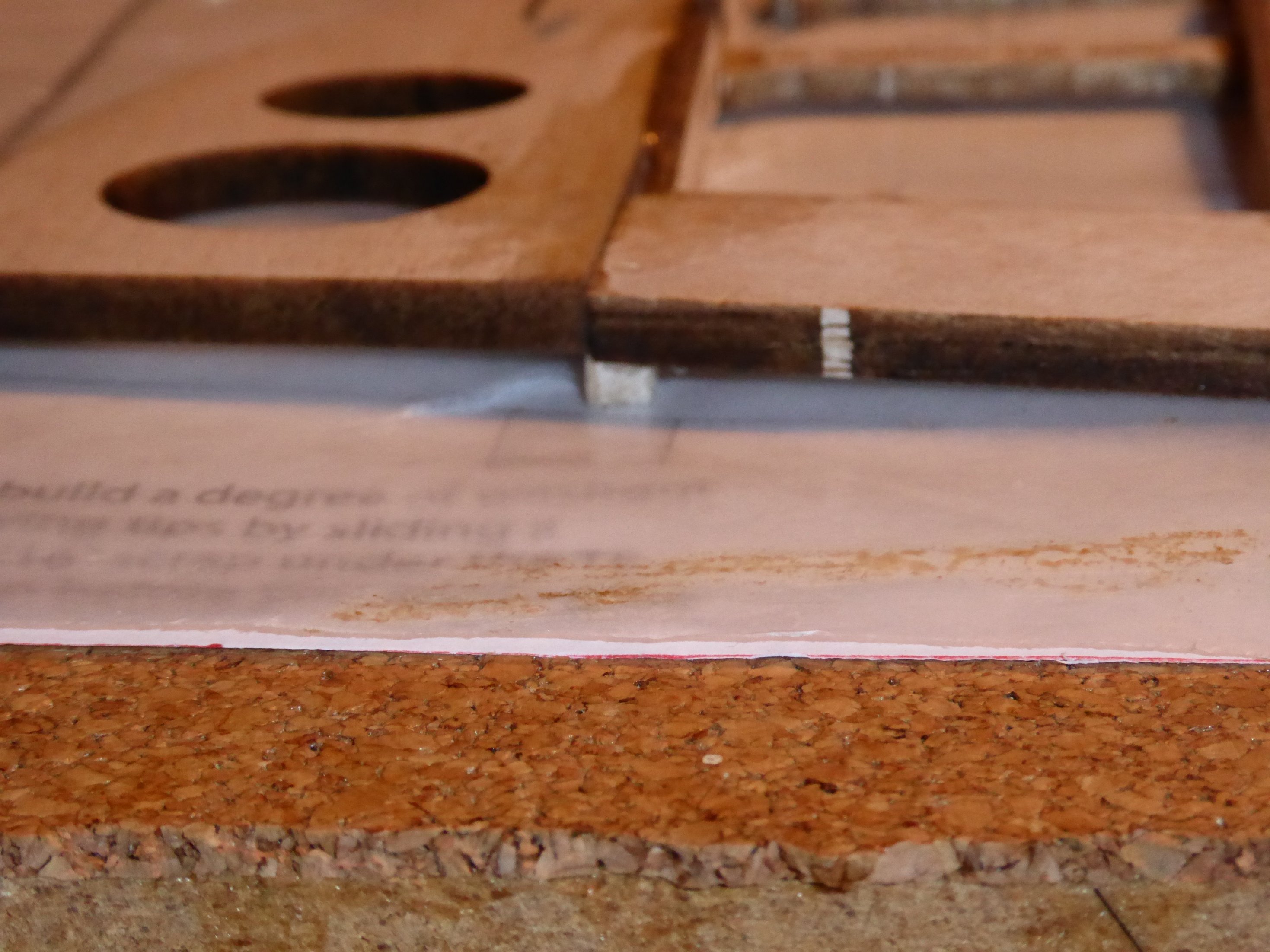I've just got around to shaping the leading and trailing edges. No problem with the TE. However, my understanding with the LE is that the front of the plywood core should end up being the LE at the vertical centre of the LE, with no or little material removal from the ply. Well on my centre panel (I haven't got to the other panels yet) it doesn't work out like that. After shaping the balsa surrounding the ply, the front of the ply, without any material removal from it, is a good 3 mm (1/8") short of the AG35 airfoil template. To achieve an accurate AG35 LE I'm going to have to add a strip of 1/8" balsa onto the leading edge.
I think what has happened here is that the ply insert into the ribs is not accurately dimensioned and is short of where the front of the LE should be. I don't yet know whether this will be the case on the other panels.
I've previously expressed my thoughts on the LE structure. I'll say no more.
Andy



